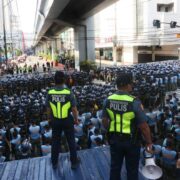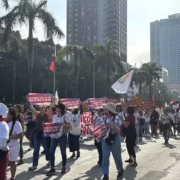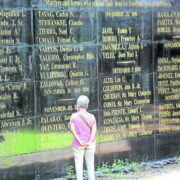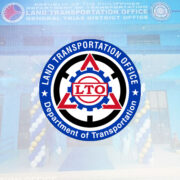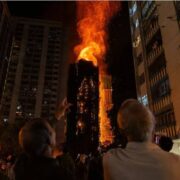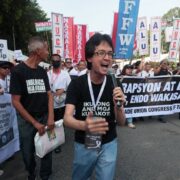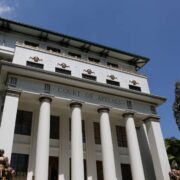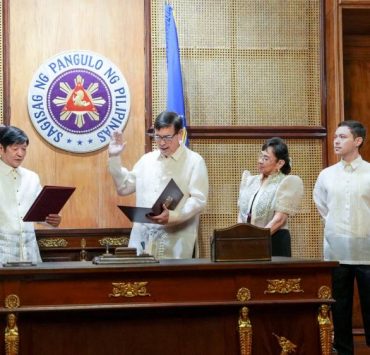Jesuit land grabbing?
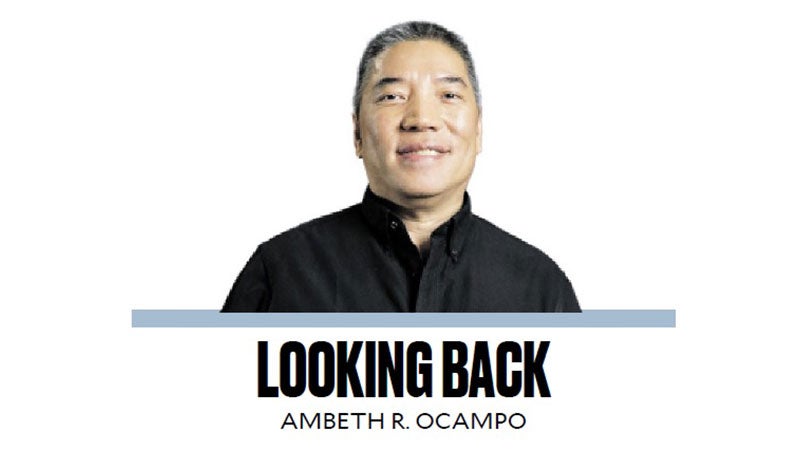
In the film “GomBurZa,” the recollect superior remarked they were used to frame the three priests. Like an oracle, he predicts that history will not be kind to the friar orders in this matter, that the name of the Spanish governor general who sealed the fate of Gomburza will be forgotten, but not the hatred for the friars. That has come true in our anti-colonial classroom history that, simplistically, depicts friars as lecherous creeps and Guardias Civiles as evil. Colonialism is more complicated, it is rooted in uneven socioeconomic structures, clashes of cultures, the twin faces of evangalization, and much more. Unfortunately, what remains in the popular mind are caricatures of Padre Damaso and Fray Botod perpetuated by art, film, and social media.
A pity that courses on primary source Philippine history leave out fascinating Spanish accounts of their contact with native peoples. The 17th and 18th centuries missing from our textbooks will show how religious orders preserved our native languages in dictionaries, vocabularios, grammars; how friars established schools, hospitals, and churches that provided early warning and safe refuge from slave raiders from the south. From friar mission territories grew our present barrios, towns, cities, and provinces. Not all is good of course, not all is bad either. For us in the present who look back, we must not throw the baby out with the bathwater.
In Philippine history textbooks over four centuries of Spanish rule, 1565-1898, take up a chapter or two compared with a dozen that cover the last quarter of the 19th century: beginning with the execution of Gomburza in 1872, to the outbreak of the Philippine Revolution in 1896, to the declaration of independence in 1898 and the establishment of the short-lived Malolos Republic in 1899. Why do Franciscans and Dominicans come to mind when we think of evil friars? They are the villains in Rizal’s novels. In contrast, Jesuits come out unscathed. Is it because many Ateneo-educated boys became prominent in history, like Rizal and Antonio Luna, who maintained positive memories of their school and teachers?
Jesuits are not friars; they do not follow monastic rules and work in the world. Jesuits, unlike other religious orders, did not own huge tracts of land at the time of the revolution. Unlike other religious orders that took on, for lack of personnel, secular tasks like: supervising elections, keeping lists of residents, maintaining order, sometimes taking arms against attacks to their territory, Jesuits don’t have those properties and roles, having been expelled from all Spanish dominions in 1768. They returned to the Philippines in 1859 where they are remembered today for opening the Ateneo Municipal in Intramuros (later Ateneo de Manila University) and doing mission work in Mindanao that explains their universities in Cagayan de Oro, Davao, Zamboanga as schools in Cebu, Iloilo, and Naga.
If the Jesuits were not expelled from the Philippines in the 18th century, would they be seen positively in relation to the friar orders that remained? Since we just concluded the feast of the Nazareno de Quiapo, let us go back to 1609 when the native chief of Quiapo, Miguel Banal, sent a petition to Philip III seeking intercession in a case of alleged land grabbing by the Jesuits.
According to Banal, the Jesuits had acquired a garden somewhere in the back of Quiapo from a church dean but started: “insinuating themselves more and more into our lands and taking more than what was assigned to them by the dean; and that we had scarcely any land remaining in the village for our fields, and even for our houses.”
Jesuit historian, Horacio de la Costa, says the land was donated to the Jesuits, and that income was generated from it by leasing it to Chinese gardeners and fruit growers. Native complainants claimed the land was taken from the heirs of Rajah Soliman. The governor declared that the land was a gift to the Jesuits by a cathedral dean who acquired it from a native.
Banal followed up on an earlier petition seeking resolution to the case, or at least an update on what was decided by the Real Audiencia. In 1609, the Jesuits built a house on Banal’s fields. Not content with that a Jesuit brother named Nieto brought “negroes and Indians, armed with halberds and [ka]tanas; and of his own accord and with absolute authority, razed my house to the ground. This caused scandal to those who saw a religious armed for the purpose of destroying the house of a poor indio—although after seeing his intention to seize all my property and bind me, I did not raise my eyes to behold him angered, because of the respect that I know is due to minister who teach us the law of God …”
A Spanish alcalde mayor took Banal’s side and made sure his house was rebuilt. But the Jesuits threatened to destroy any house Banal rebuilt on the disputed land. We do not know how this story ends until a historian younger than me finds the rest of the documentation in the Spanish archives. History remains relevant four centuries after because land grabbing remains rampant in our time.
—————–Comments are welcome at aocampo@ateneo.edu
Ambeth is a Public Historian whose research covers 19th century Philippines: its art, culture, and the people who figure in the birth of the nation. Professor and former Chair, Department of History, Ateneo de Manila University, he writes a widely-read editorial page column for the Philippine Daily Inquirer, and has published over 30 books—the most recent being: Martial Law: Looking Back 15 (Anvil, 2021) and Yaman: History and Heritage in Philippine Money (Bangko Sentral ng Pilipinas, 2021).


